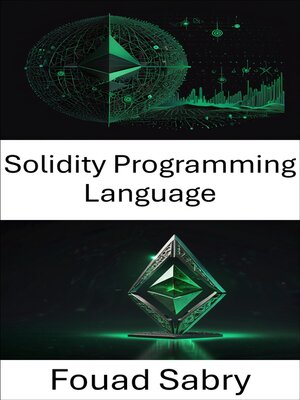Solidity Programming Language
ebook ∣ Mastering Smart Contracts for Ethereum Classic Development · Ethereum Classic
By Fouad Sabry

Sign up to save your library
With an OverDrive account, you can save your favorite libraries for at-a-glance information about availability. Find out more about OverDrive accounts.
Find this title in Libby, the library reading app by OverDrive.



Search for a digital library with this title
Title found at these libraries:
| Library Name | Distance |
|---|---|
| Loading... |
Mastering the Solidity Programming Language is essential for anyone engaging with Ethereum Classic and the broader decentralized technology movement. In a world reshaped by code and consensus, this book empowers readers to understand how political science concepts such as governance, decentralization, and systems thinking intersect with smart contract development.
Chapters Brief Overview:
1: Solidity: Introduces Solidity's syntax and use in Ethereum Classic smart contract creation.
2: Solana (blockchain platform): Explores Solana's innovations and contrasts it with Ethereum Classic's decentralized vision.
3: Counterparty (platform): Discusses Counterparty's asset protocol and its influence on programmable blockchains.
4: Cardano (blockchain platform): Compares Cardano's layered architecture to Ethereum Classic's model for resilient design.
5: Tornado Cash: Details privacy in decentralized networks and its implications for Ethereum Classic.
6: Smart contract: Examines smart contracts as the legal code underpinning decentralized systems.
7: Tron (blockchain): Analyzes Tron's governance and structure in light of Ethereum Classic's autonomy.
8: Ethereum Classic: Delves into ETC's origins, philosophy, and importance in blockchain political integrity.
9: Layer1 blockchain: Explains foundational blockchain layers and how ETC maintains decentralization.
10: Blockchain: Covers blockchain basics with emphasis on political decentralization and transparency.
11: Avalanche (blockchain platform): Highlights Avalanche's consensus and how it differs from Ethereum Classic's approach.
12: The DAO: Tells the story of The DAO's collapse and the birth of Ethereum Classic from it.
13: Hyperledger: Compares enterprise blockchains with ETC's permissionless public ledger.
14: JEB decompiler: Introduces tools for analyzing Ethereum Classic bytecode and smart contracts.
15: Gavin Wood: Explores Wood's influence on smart contracts and Ethereum's ideological split.
16: Astar Network: Presents Astar's role in multichain dApps and contrasts with ETC's securityfirst model.
17: TON (blockchain): Examines TON's vision and its relevance to Ethereum Classic's open governance.
18: Confidential Consortium Framework: Discusses private blockchain frameworks and ETC's public accountability stance.
19: Decentralized finance: Explores DeFi's structure and Ethereum Classic's role in supporting uncensored finance.
20: Ethereum: Details Ethereum's evolution and diverging philosophies with Ethereum Classic.
21: Decentralized application: Showcases dApp ecosystems and their implementation on the Ethereum Classic platform.
Whether you're a professional developer, an undergraduate or graduate student, an enthusiast, or a curious hobbyist, this book offers valuable insights into how Ethereum Classic bridges decentralized programming and political structure. It's a rich resource for those aiming to contribute to or understand the digital democratic shift shaping our global future.







